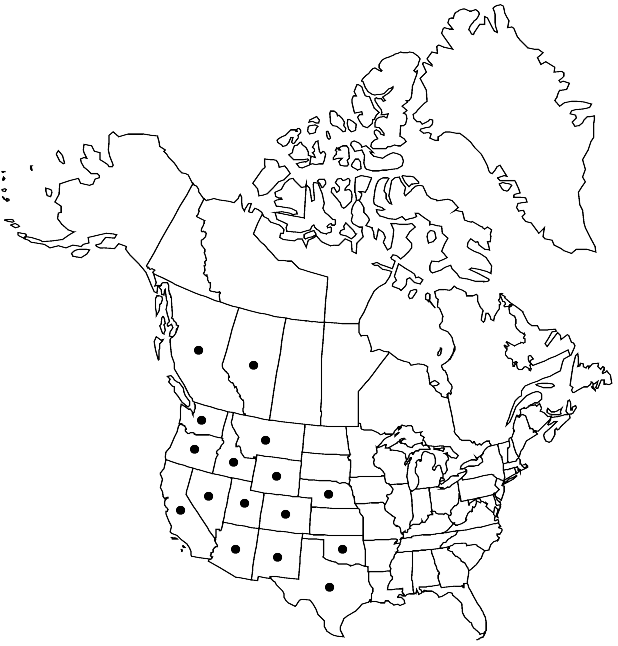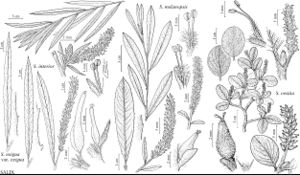Salix exigua var. exigua
Shrubs or trees, 0.5–5 (–10) m. Stems: branches yellowbrown to redbrown; branchlets yellowish, yellowbrown, or redbrown, puberulent, densely short-silky-tomentose or short-silky-villous, hairs appressed, sometimes few spreading. Leaves: stipules absent or rudimentary on early ones, foliaceous on late ones; petiole pubescent adaxially; largest medial blade lorate, 30–136–143 × 2–8 mm, 10–16–28 times as long as wide, abaxial surface densely silky-villous or pilose, hairs appressed or spreading, straight or wavy, adaxial sparsely long-silky to glabrescent; juvenile blade very densely long-silky abaxially (hairs usually appressed, sometimes a few spreading). Catkins: staminate 13–54 × 2–10 mm, flowering branchlet 1.5–16 mm; pistillate loosely flowered, slender or stout, 14.5–70 × 4–12 mm, flowering branchlet 2–16 mm; floral bract 1.2–1.6 mm, apex rounded, entire, abaxially hairy (or glabrate), hairs wavy or straight. Staminate flowers: abaxial nectary 0.2–0.8 mm, adaxial nectary oblong, 0.3–0.8 mm; anthers 0.5–1 mm. Pistillate flowers: adaxial nectary oblong or ovate, 0.3–0.9 mm shorter than stipe; stipe 0.2–0.9 mm; ovary obclavate, usually glabrous, sometimes beak pilose, beak bulged below or abruptly tapering to styles; ovules 13–30 per ovary; styles 0–0.2 mm; stigmas flat, abaxially non-papillate with rounded tip, or 2 plump lobes, 0.3–0.5 mm. 2n = 38.
Phenology: Flowering early Mar-late Jun or mid Jul.
Habitat: Riparian, bars and shores of streams and lakes, silty, sandy, or gravelly substrates
Elevation: 600-2800 m
Distribution

Alta., B.C., Ariz., Calif., Colo., Idaho, Mont., Nebr., Nev., N.Mex., Okla., Oreg., Tex., Utah, Wash., Wyo.
Discussion
Hybrids:
Variety exigua forms natural hybrids with var. hindsiana, Salix columbiana, S. interior, and S. melanopsis.
Variety exigua × var. hindsiana was reported by R. D. Dorn (1998). Inasmuch as the two varieties are subtly distinct, hybrids are difficult to recognize.
Variety exigua × Salix interior probably occurs throughout their area of overlap; it is known to me from Alberta and Nebraska, where there are plants with leaves indistinctly toothed and more silky than in S. interior. R. D. Dorn (1998) reported it from Alberta, British Columbia, Colorado, Montana, Nebraska, New Mexico, Oklahoma, South Dakota, Texas, and Wyoming.
Variety exigua × Salix melanopsis is intermediate, with juvenile leaves densely hairy proximally, truncate floral bracts, and prominent stipules (R. D. Dorn 1998).
Selected References
None.
Lower Taxa
"-143mm" is not declared as a valid unit of measurement for this property."-143mm" is not declared as a valid unit of measurement for this property.
